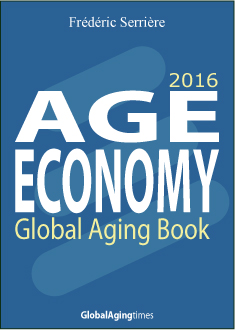Alzheimer’s disease (Alzheimer’s), an ultimately fatal form of dementia, is the sixth leading cause of death in the United States, accounting for 3.6% of all deaths in 2014.
Alzheimer’s deaths can be an indicator of paid and unpaid caregiver burden because nearly everyone in the final stages of Alzheimer’s needs constant care, regardless of the setting, as the result of functional and cognitive declines. To examine deaths with Alzheimer’s as the underlying cause, state-level and county-level death certificate data from the National Vital Statistics System for the period 1999–2014 were analyzed. A total of 93,541 Alzheimer’s deaths occurred in the United States in 2014 at an age-adjusted (to the 2000 standard population) rate of 25.4 deaths per 100,000 population, a 54.5% increase compared with the 1999 rate of 16.5 deaths per 100,000.
Most deaths occurred in a nursing home or long-term care facility. The percentage of Alzheimer’s decedents who died in a medical facility (e.g., hospital) declined from 14.7% in 1999 to 6.6% in 2014, whereas the percentage who died at home increased from 13.9% in 1999 to 24.9% in 2014. Significant increases in Alzheimer’s deaths coupled with an increase in the number of persons with Alzheimer’s dying at home have likely added to the burden on family members or other unpaid caregivers. Caregivers might benefit from interventions such as education, respite care, and case management that can lessen the potential burden of caregiving and can improve the care received by persons with Alzheimer’s.
Mortality data for 1999–2014 were analyzed using CDC WONDER. The data were provided by the National Vital Statistics System and based on information from all resident death certificates filed in the 50 states and the District of Columbia (DC). The period analyzed represented all of the years with U.S. mortality data available at the time of analysis* using the International Classification of Disease, Tenth Revision (ICD-10) code set, which was implemented in 1999. CDC WONDER queries were used to generate the number of deaths with Alzheimer’s reported as the underlying cause of death, along with unadjusted and age-adjusted death rates with 95% confidence intervals and standard errors for groups defined by characteristics including year, sex, age group (?64, 65–74, 75–84, and ?85 years), race/ethnicity (non-Hispanic white, non-Hispanic black, American Indian/Alaska Native, Asian/Pacific Islander, or Hispanic), urban-rural classification, state, and county.
The percentages of Alzheimer’s deaths that occurred in medical facilities, the decedent’s home, hospice facility, or nursing home/long-term care facilities also were obtained. County-level data were examined for the aggregated years of 2005–2014 because the geographic distribution for 1999–2004 data were inconsistent with more recent data and would have obscured any current geographic patterns. ICD-10 codes G30.0, G30.1, G30.8, and G30.9 were used to identify Alzheimer’s as the underlying cause of death. These codes are used by CDC to describe Alzheimer’s as a leading cause of death (1). Other forms of dementia were not examined in this analysis.
Mortality rates were calculated using population estimates produced by the U.S. Census Bureau in collaboration with CDC’s National Center for Health Statistics. Age-adjusted mortality rates were calculated using the 2000 U.S. standard population. The z-statistic (assuming a normal approximation for the distribution of rates) was used to compare rates at a statistical significance level of p<0.05. No adjustment was made for multiple comparisons. Joinpoint regression was used to test the significance of trends in age-specific rates for the period 1999–2014.
From 1999 to 2014, age-specific rates of deaths attributed to Alzheimer’s increased among adults aged 75–84 years from 129.5 to 185.6 per 100,000 population and among adults aged ?85 years, from 601.3 to 1,006.8. The largest increase in the rates of Alzheimer’s deaths among adults aged ?85 years occurred from 1999 to 2005, compared with 2005–2014 (p<0.001). Since 2005, although the mortality rate has continued to increase, the rate of increase was not as large as 1999–2005.
The age-adjusted Alzheimer’s death rate per 100,000 population increased from 16.5 (44,536 deaths) in 1999 to 25.4 (93,541 deaths) in 2014, an increase of 54.5%. In 2014, rates were higher compared with 1999 among all age groups; also in 2014 rates were higher among women compared with men and among non-Hispanic whites compared with other racial/ethnic populations. In 2014, death rates for Alzheimer’s were lower among residents of large central metropolitan areas and large fringe metropolitan areas compared with residents in other urban-rural classifications.
From 1999 to 2014, rates of Alzheimer’s deaths significantly increased for 41 states and DC (Table). Only one state, Maine, had a significant decrease in age-adjusted Alzheimer’s deaths. Age-adjusted rates for all 50 states and DC ranged from 7.0 to 29.8 per 100,000 in 1999 and from 10.7 to 43.6 per 100,000 in 2014.
Using average annual county-level data for the period 2005–2014, age-adjusted rates of Alzheimer’s deaths ranged from 4.3 to 123.7 per 100,000. Counties with the highest age-adjusted rates were primarily in the Southeast, plus some additional areas in the Midwest and West.
Most Alzheimer’s decedents died in a nursing home or long-term care facility in 1999 (67.5%) and 2014 (54.1%). The percentage who died in a medical facility declined from 14.7% in 1999 to 6.6% in 2014. In contrast, the percentage who died at home increased from 13.9% in 1999 to 24.9% in 2014, with an additional 6.1% who died in a hospice facility in 2014.
Suggested citation for this article: Taylor CA, Greenlund SF, McGuire LC, Lu H, Croft JB. Deaths from Alzheimer’s Disease — United States, 1999–2014. MMWR Morb Mortal Wkly Rep 2017;66:521–526. DOI: http://dx.doi.org/10.15585/mmwr.mm6620a1.


